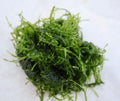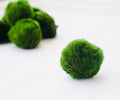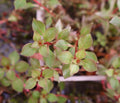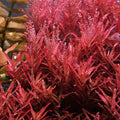Do Live Plants Really Clean Your Tank?
If you're considering or already have live plants in your tank, you've likely pondered their impact beyond their aesthetic appeal. In this post, I'm here to answer the burning question: Do live plants actually clean your aquarium? Let's unravel the science behind the beauty.
The Nitrogen Cycle and Plant Nutrition
Similar to garden plants that thrive on cow manure, live aquarium plants have a unique source of nutrition – fish poop. Fish produce ammonia, a compound broken down by beneficial bacteria in the nitrogen cycle into nitrite and eventually nitrate. While many believe that plants solely feed on ammonia, the truth is they also consume nitrite and nitrate produced during the nitrogen cycle.
The Role of Plants in Nitrate Reduction
As fish populate the tank and biological processes unfold, nitrate levels can rise. Excessive nitrate, though less toxic than ammonia, can still harm fish. Here's where live plants step in. They actively reduce nitrate by absorbing it through their roots and leaves. However, while they play a crucial role, they do not entirely replace the need for regular water changes.
Water Changes and Additional Functions
Water changes serve various functions beyond nitrate reduction. They contribute to the overall aesthetics of the tank, help maintain a pleasing appearance by trimming plants, and prevent the accumulation of detritus and dead plants that can become ammonia sources. While plants assist in nitrate control, water changes remain indispensable.
Frequency of Water Changes with Live Plants
With a thriving population of live plants, you might extend the time between water changes. While weekly changes are the norm, some aquariums with robust plant growth can opt for monthly changes. However, striking the right balance is crucial, and drastic changes in water change frequency should be approached cautiously.
Competition with Algae for Nutrients
Live plants act as competitors for nutrients with algae, curbing excessive algae growth. In the absence of plants, nutrients, including fish waste, are more readily available for algae, leading to potential overgrowth. Incorporating live plants helps maintain a healthier nutrient balance.
Avoiding Pitfalls
A common pitfall arises when introducing live plants into an established aquarium with high nitrate levels. As plants rapidly absorb nutrients, they can exhaust nitrate, causing them to either stagnate or slowly die. To avoid this, it's essential to supplement nutrients through fertilizers, either in liquid form or as root tabs for substrate-rooted plants.
Fast-Growing Plants vs. Slow-Growing Plants
When choosing plants for nutrient reduction, opt for fast-growing varieties. Fast-growing plants consume more nutrients, aiding in effective water purification. Slow-growing plants, like Anubias or Bushy Flandre, have a more gradual impact on water quality.
In conclusion, live aquarium plants are not just eye candy; they play a crucial role in maintaining a healthy tank environment. While they assist in nitrate reduction and compete with algae for nutrients, they do not eliminate the need for water changes. Striking a balance between plant care, nutrient supplementation, and regular tank maintenance ensures a flourishing underwater ecosystem.
















